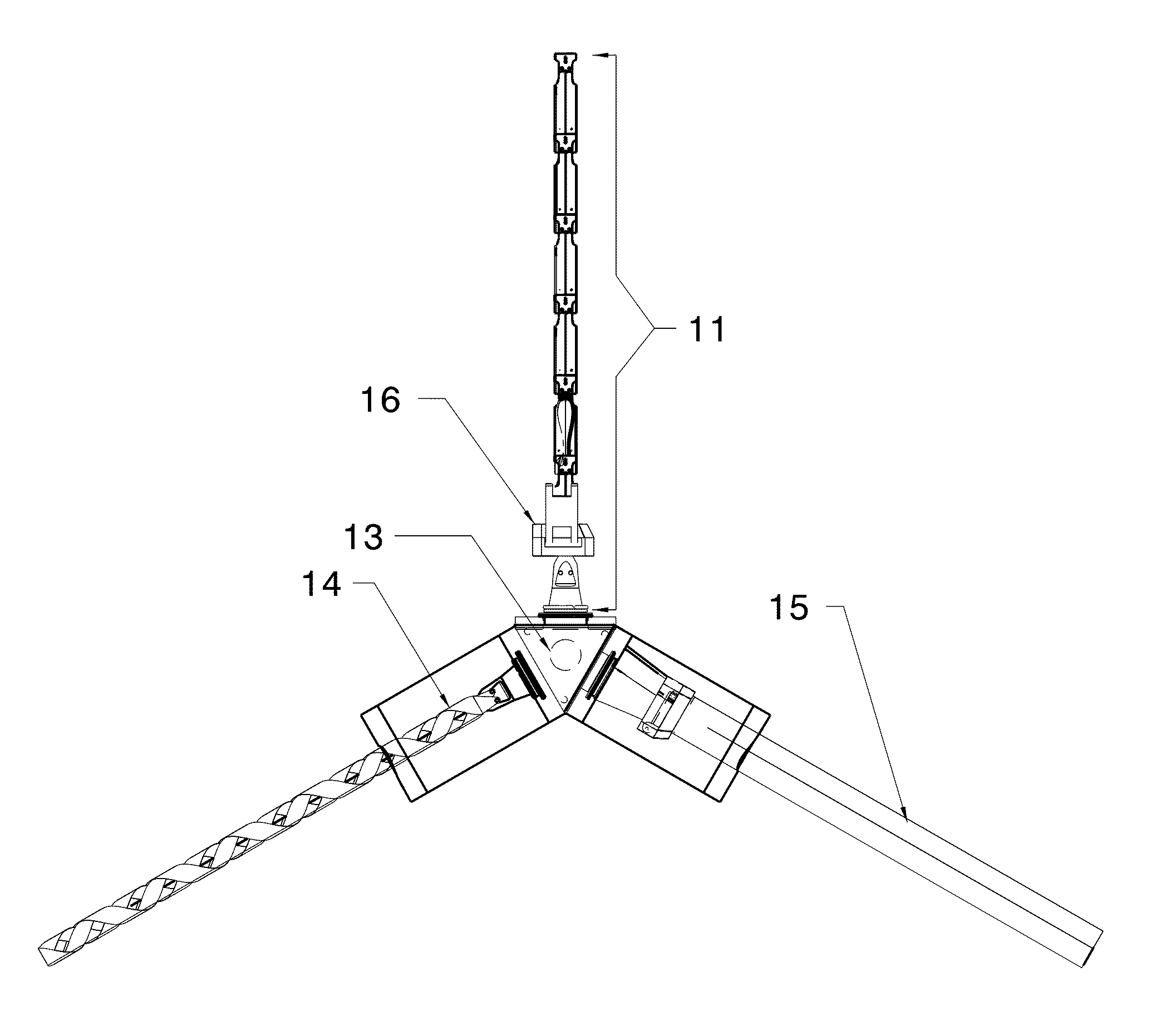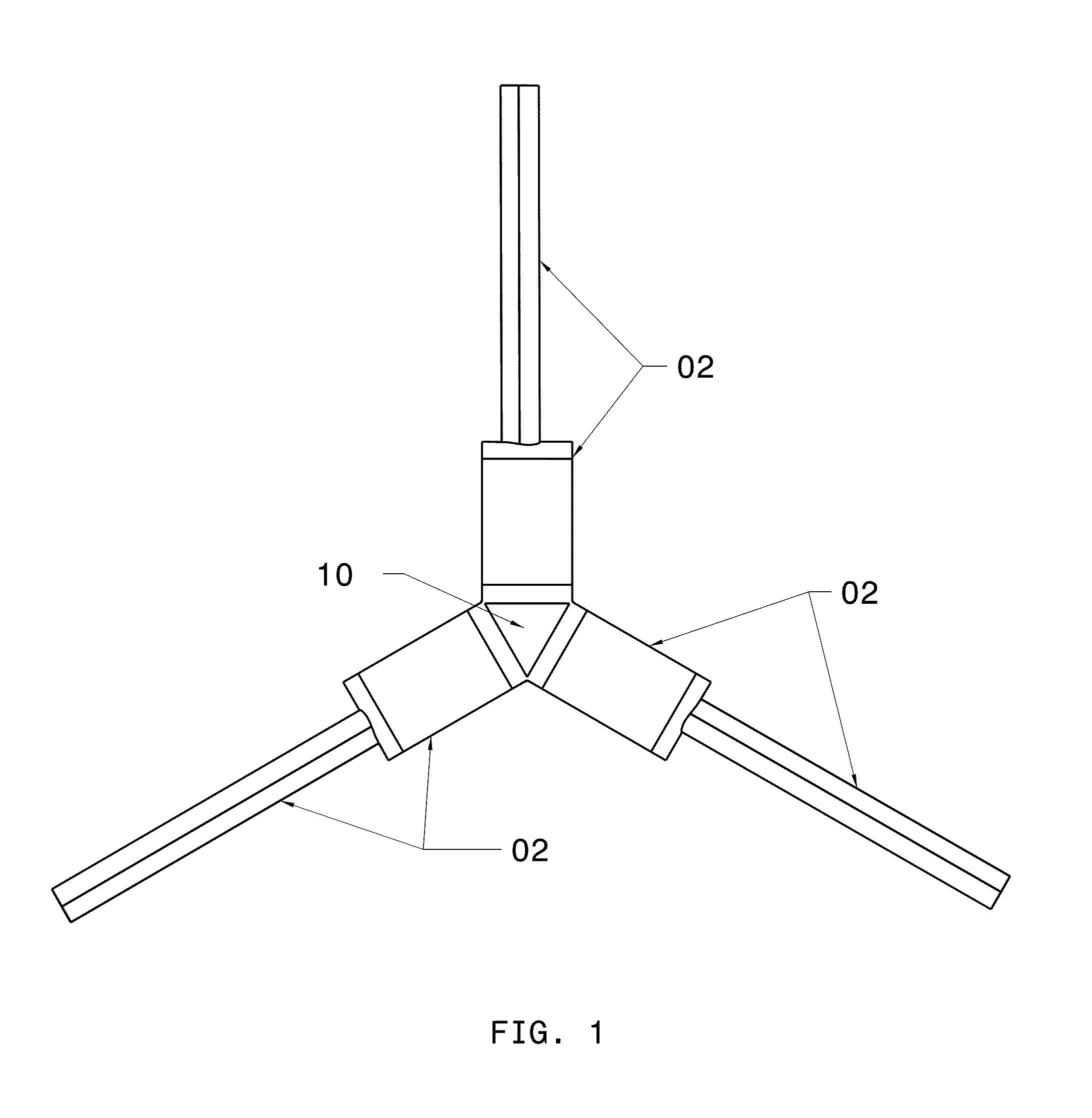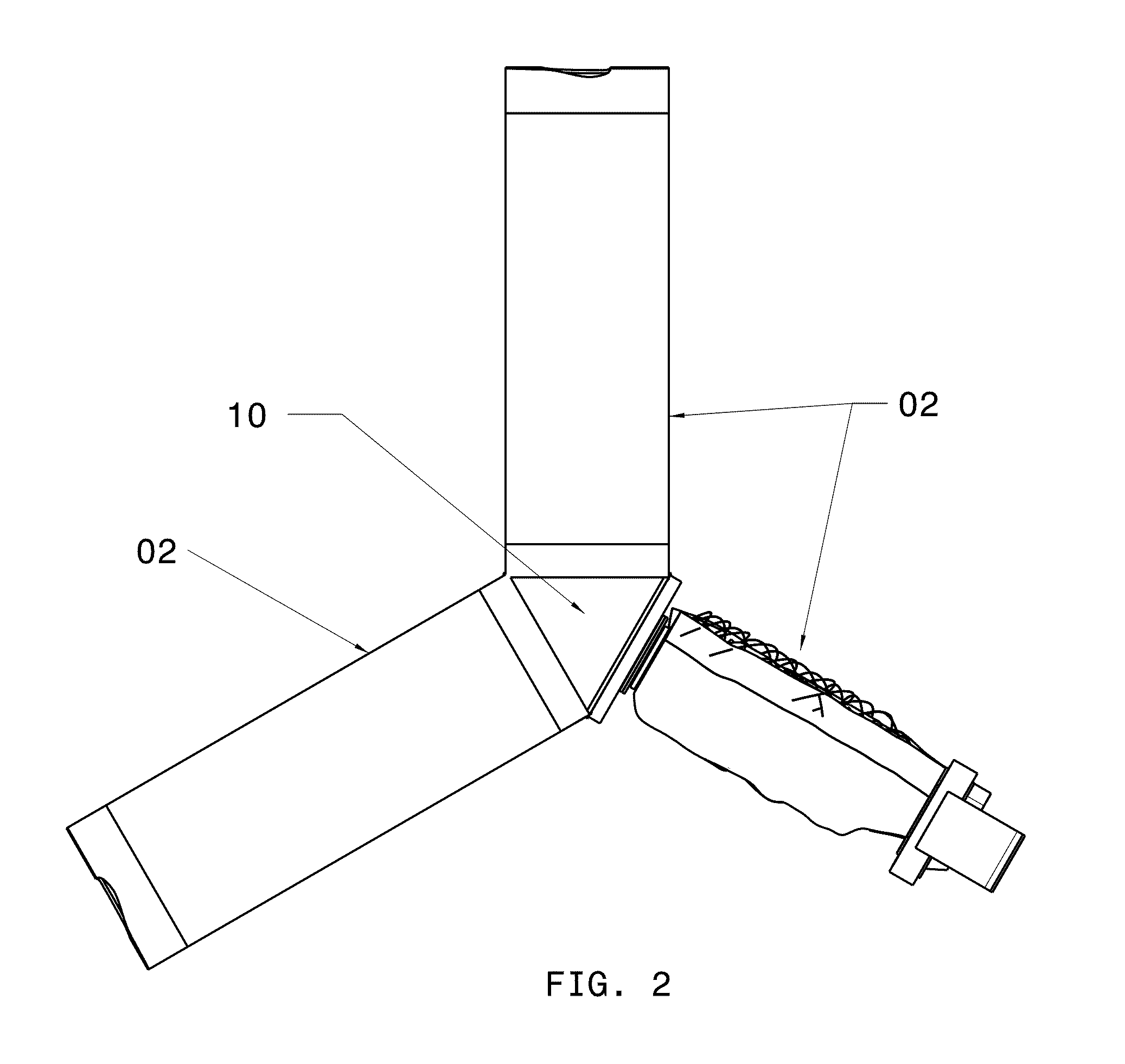Retractable composite rotor blade assembly
a composite rotor blade and rotor blade technology, applied in the field of aerospace, can solve the problems of inability to provide the required compactability of the rotor blade, inability to adjust the rotor blade, and inability to meet the requirements of aerodynamic stability, and achieve the effect of convenient modification
- Summary
- Abstract
- Description
- Claims
- Application Information
AI Technical Summary
Benefits of technology
Problems solved by technology
Method used
Image
Examples
Embodiment Construction
[0057]A technical description of the major subassemblies of the invention will follow.
Rotor Blades
[0058]Referring to FIG. 1 and FIG. 2, the retractable composite impeller (rotor blade) assembly embodiment comprises a plurality of rotor blades 02 (three in this embodiment) as depicted. FIG. 1 also shows the retractable composite rotor blade assembly of a first preferred embodiment comprising the major subassemblies and in its fully extended condition. The geometry of a rotor hub assembly 10 corresponds to the number of rotor blades 02. In this configuration, each rotor blade assembly 02 experiences the same centripetal force during rotation and deceleration.
[0059]Referring to FIG. 1 thru FIG. 4, the major subassemblies of the rotor blade assembly of the present invention work in concert to allow each rotor blade 02 to have the ability to become extended when the rotor system is rotated, and contracted when the rotor system is forced to come to rest and in a controlled manner by way o...
PUM
 Login to View More
Login to View More Abstract
Description
Claims
Application Information
 Login to View More
Login to View More - R&D
- Intellectual Property
- Life Sciences
- Materials
- Tech Scout
- Unparalleled Data Quality
- Higher Quality Content
- 60% Fewer Hallucinations
Browse by: Latest US Patents, China's latest patents, Technical Efficacy Thesaurus, Application Domain, Technology Topic, Popular Technical Reports.
© 2025 PatSnap. All rights reserved.Legal|Privacy policy|Modern Slavery Act Transparency Statement|Sitemap|About US| Contact US: help@patsnap.com



